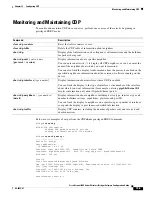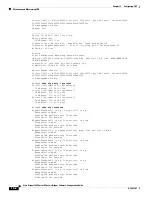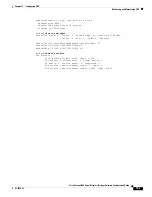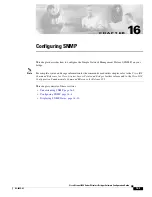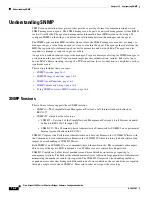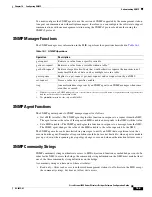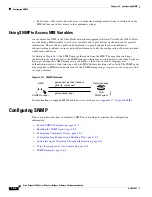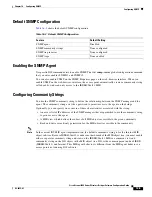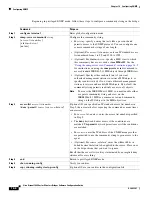
16-7
Cisco Aironet 1400 Series Wireless Bridges Software Configuration Guide
OL-4059-01
Chapter 16 Configuring SNMP
Configuring SNMP
To disable access for an SNMP community, set the community string for that community to the null
string (do not enter a value for the community string). To remove a specific community string, use the
no snmp-server community
string
global configuration command.
This example shows how to assign the strings
open
and
ieee
to SNMP, to allow read-write access for
both, and to specify that
open
is the community string for queries on non-IEEE802dot11-MIB objects
and
ieee
is the community string for queries on IEEE802dot11-mib objects:
bridge(config)#
snmp-server view dot11view ieee802dot11 included
bridge(config)#
snmp-server community open
rw
bridge(config)#
snmp-server community ieee view ieee802dot11 rw
Configuring Trap Managers and Enabling Traps
A trap manager is a management station that receives and processes traps. Traps are system alerts that
the bridge generates when certain events occur. By default, no trap manager is defined, and no traps are
issued.
Bridges running this IOS release can have an unlimited number of trap managers. Community strings
can be any length.
Table 16-3
describes the supported bridge traps (notification types). You can enable any or all of these
traps and configure a trap manager to receive them.
Some notification types cannot be controlled with the
snmp-server enable
global configuration
command, such as
tty
and
udp-port
. These notification types are always enabled. You can use the
snmp-server host
global configuration command to a specific host to receive the notification types
listed in
Table 16-3
.
Table 16-3 Notification Types
Notification Type
Description
authenticate-fail
Enable traps for authentication failures.
config
Enable traps for SNMP configuration changes.
deauthenticate
Enable traps for client device deauthentications.
disassociate
Enable traps for client device disassociations.
dot11-qos
Enable traps for QoS changes.
entity
Enable traps for SNMP entity changes.
envmon temperature
Enable traps for monitoring radio temperature. This trap is sent out when the
bridge radio temperature approaches the limits of its operating range (55 C to
-33 C; 131 F to -27.4 F).
snmp
Enable traps for SNMP events.
syslog
Enable syslog traps.
wlan-wep
Enable WEP traps.





